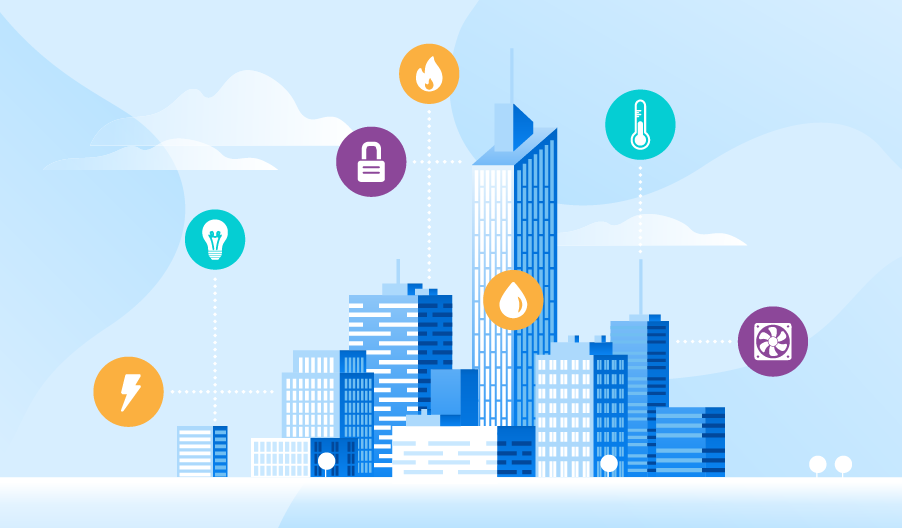How does a smart building work?
A smart building uses its intelligence to collect actionable data from user devices, sensors, systems, and services on the premises.
Applying that data using artificial intelligence and machine learning (AI/ML) makes the building both programmable and responsive
to the needs of the users and the building manager.
 |
What is a connected building, by contrast?A connected building can generally be described as a building whose operations technology is connected to and managed with the IT network. These actions often have occurred in silos, as various technologies doing various tasks around the building have evolved at different rates. What's the role of PoE in a smart building?As PoE evolved from 15W to 90W of power across Ethernet cabling, the numbers and types of devices that can be powered and connected by PoE have grown dramatically. Using PoE to power devices also offers greater location flexibility and lower cost to deploy and operate them than using AC power. In a smart building, PoE can power devices such as sensors, lighting, HVAC systems, elevators, and fire alarms, as well as USB-C laptops, TV and computer monitors, shades, refrigerators, and room air conditioners. |
Benefits of smart buildingsLower operational costsSmart-building data can also support automated scheduling, from parking-space allocation to workspace assignment to conference room reservation. Lower energy costsConnecting lighting, shades, and HVAC systems, for instance, enables building operators to automatically adjust temperature, shades, and lighting based on time of day and occupancy. Greater flexibility
Smart-building data can be used, for example, to detect changes in occupancy density. The building's HVAC systems then adjust airflow, humidity, and temperature appropriately. Or based on escalating density thresholds, lighting color could change to indicate too many people in a conference room, workspace, or building. Space utilization
|
 |